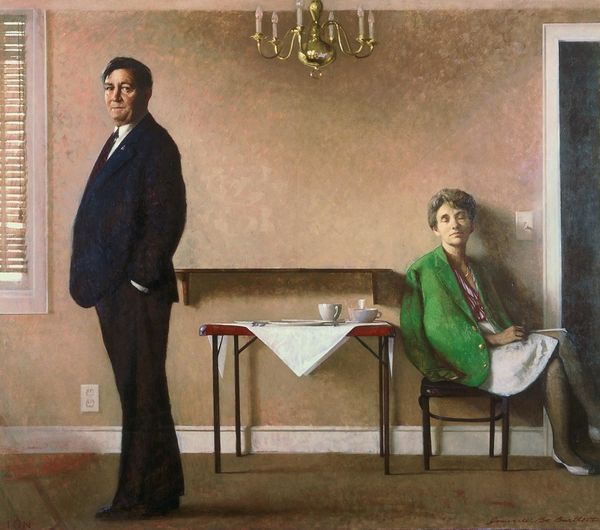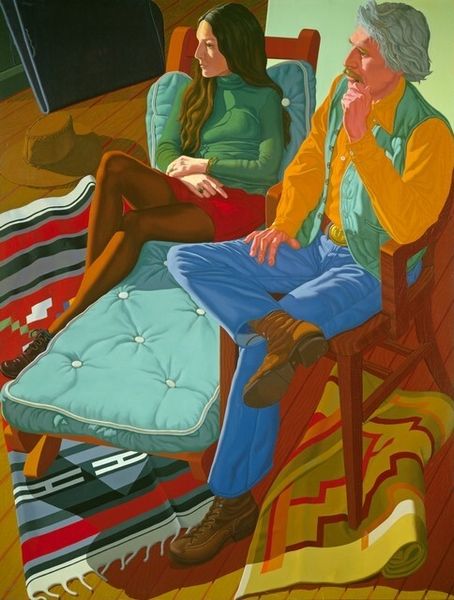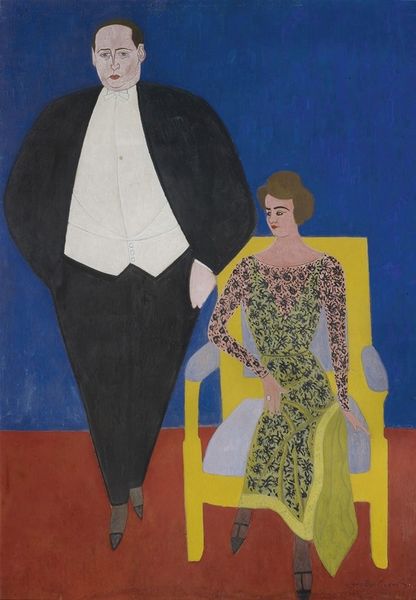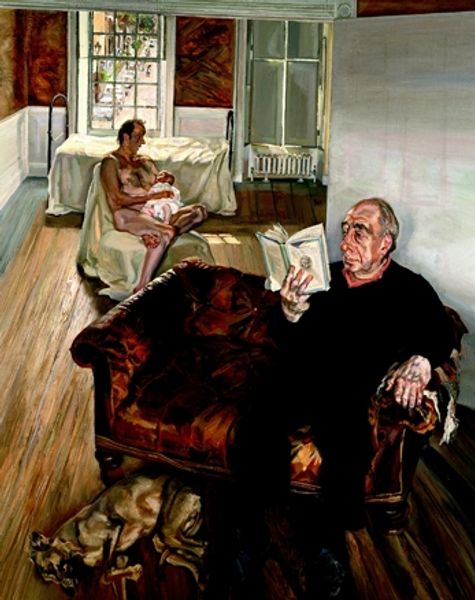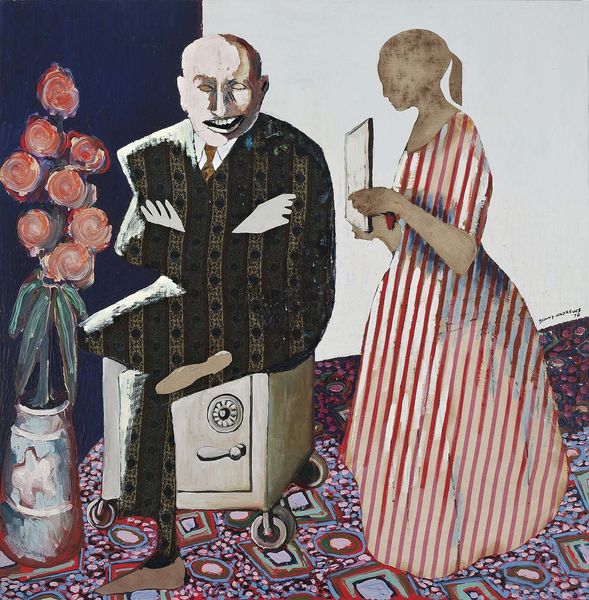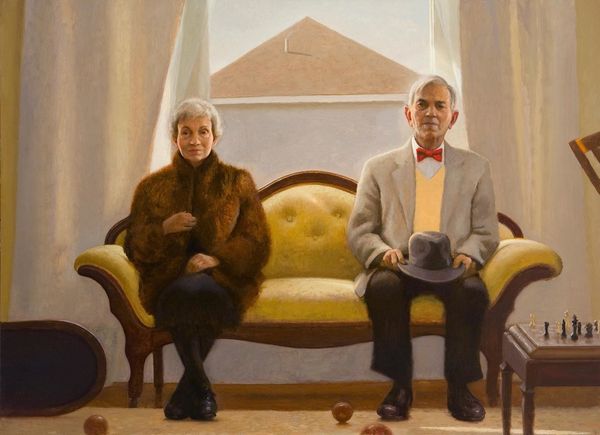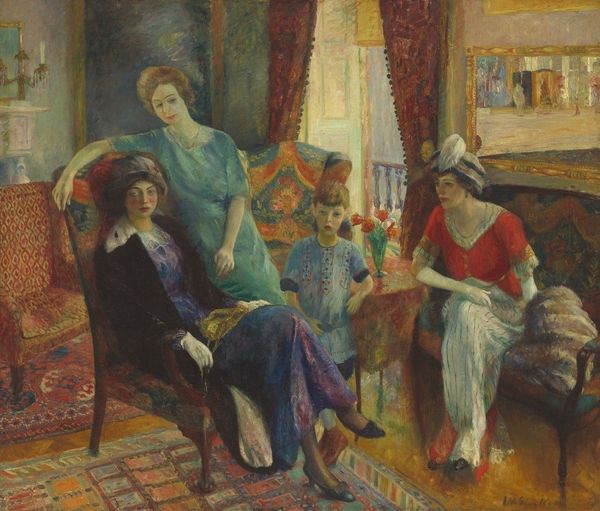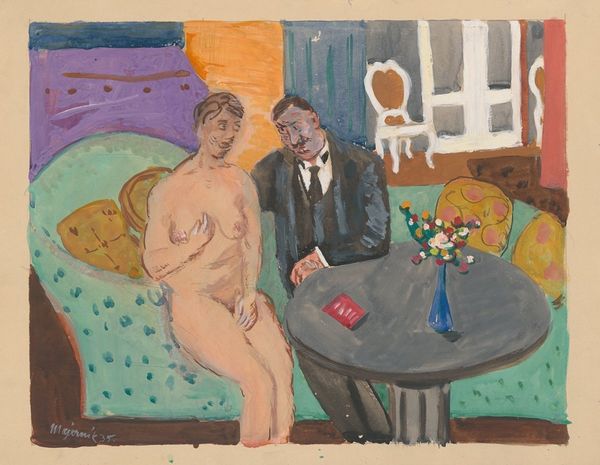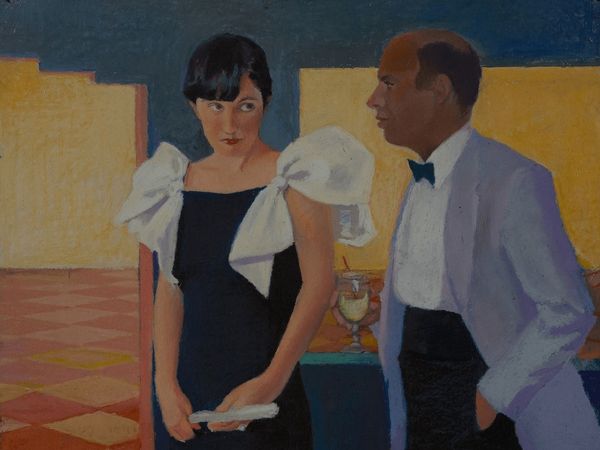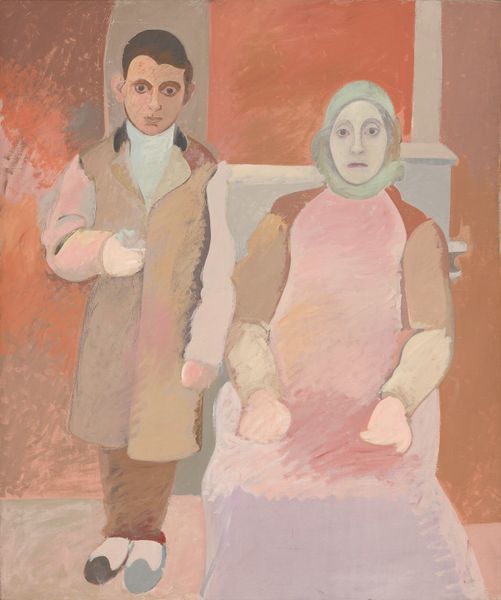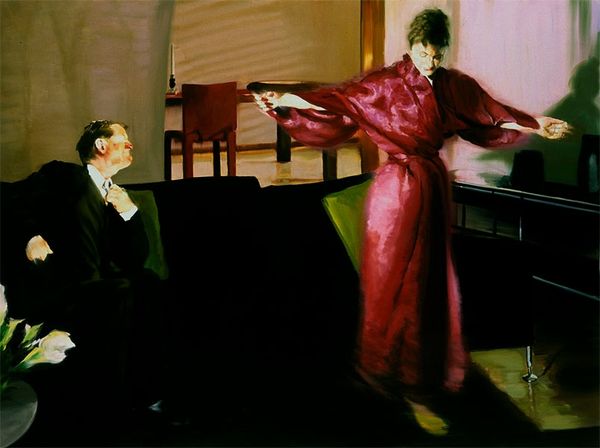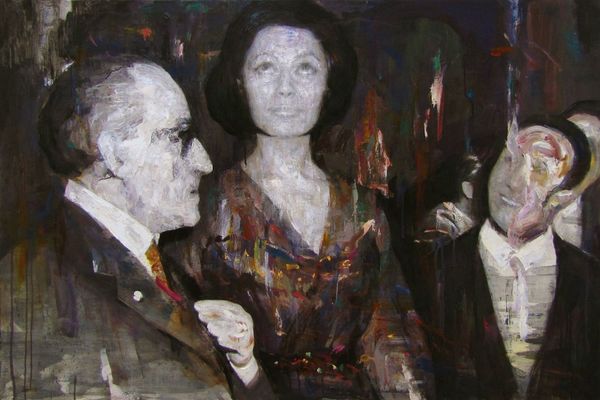
painting, oil-paint
#
portrait
#
painting
#
oil-paint
#
figuration
#
oil painting
#
modernism
#
realism
Copyright: Dmitri Zhilinsky,Fair Use
Curator: Dmitri Zhilinsky's 1981 painting, "Irene and Peter Ludwig," captures the essence of its subjects through a distinctive blend of realism and something more ethereal. What's your initial take on this double portrait? Editor: A certain austerity comes to mind. Both subjects seem rather distanced, almost statuesque in their stillness. There is a sense of deliberate staging; they are objects in the room, much like the other artworks around them. Curator: Indeed, and Zhilinsky’s approach resonates with historical portraiture conventions where the subjects’ status and legacy take precedence. The Ludwigs, renowned art collectors, are carefully posed, their presence affirmed not just by their figures, but by the paintings visible in the background, mirroring their identity. The blue and reddish colors seem relevant also. Editor: Exactly. Look how he positions them among their possessions. The choice to depict them surrounded by modern art—perhaps works they collected? Further speaks volumes. It almost presents collecting itself as an act of identity formation. Also, those irises, they are such a classic bourgeois touch; could be interpreted as a comment on the expectations or norms of social display? Curator: Very perceptive! Blue Irises traditionally symbolize hope and faith. Do you think Zhilinsky perhaps hints at Ludwig's faith in the value and importance of modern art? The art books on the table might be suggesting something else... Do the painting and books reinforce their cultivated, intellectual identity, something about power and collecting practices, while nodding to tradition with symbolic objects like irises? Editor: Certainly a power dynamic comes across. Peter, with his slightly elevated posture, claims more visual space, a typical representation in art of masculinity in relationship with his partner. He takes on this symbolic role of protector and benefactor. While they both seem to avoid eye contact and stay contained in their inner emotional world. It's a very loaded portrait. Curator: I see what you mean; he does present a rather imposing figure. Perhaps Zhilinsky consciously echoes the visual language of traditional paired portraits to both celebrate and perhaps, subtly question, the Ludwigs' roles as patrons within the art world. It seems the artwork does invite the viewer to explore themes of legacy, power, and personal identity interwoven. Editor: Exactly! It's that tension between reverence and a touch of critical observation that really fascinates me, opening it up for consideration as a case study in patronage, display and modern portraiture.
Comments
No comments
Be the first to comment and join the conversation on the ultimate creative platform.
